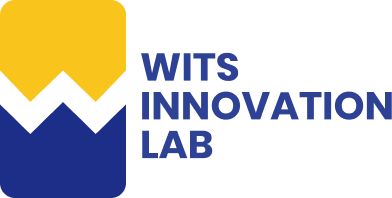Published - a year ago | 9 min read
Phygital Convergence: When Real and Digital Worlds Collide
Phygital means merging the physical and digital environments, a significant revolution in how people engage with technology and the surrounding space. An integrated phygital environment uses the best tools of each to develop engaging, smooth, and fully interactive experiences. In this blog, we will focus on the concept of phygital convergence, the technologies behind it, and how phygital convergence has changed the world.
The Concept of Phygital Convergence
Phygital convergence is a process that unifies physical and digital methods to breathe life into new concepts. It refers to merging technological media with products and spaces to make user interactions real-time. It can be defined by IoT, AR/VR, AI, and big data analytics due to its shifts towards automation, immersion, intelligence, and data, respectively.
Key Components of Phygital Convergence

1. Internet of Things (IoT): IoT employs everyday physical devices into the internet to send and receive data. Some objects have sensors that gather real-time data for auto and intelligent decision-making. Thus, IoT is the underlying principle of phygital experiences, the connection between the physical and digital worlds.
2. Augmented Reality (AR) and Virtual Reality (VR): AR augments digital information on objects in the physical environment, thereby giving users a richer experience. VR fully places the participants in artificial settings defined by interactivity. AR and VR are involved in creating phygital experiences and have essential parts to play during the blending process.
3. Artificial Intelligence (AI): AI operates high-intelligence algorithms that calculate and process big data for decision-making and automation. AI is used for intelligent engagement, customization, and prognosis elements in physical convergence, making it a crucial component.
4. Big Data Analytics: Big data analytics manages and interprets big data by analyzing it in raw formats. In the context of phygital, it provides insights into the user's actions, analyzes processes, and offers customized solutions based on data from physical and digital ecosystems.
Technologies Enabling Phygital Convergence
1. Internet of Things (IoT)
Phygital convergence is intrinsically linked with IoT as IoT facilitates integration and the interaction of tangible objects with digital networks. Many features are relevant in this context, and the following ones are considered to be crucial:
a. Sensors and Actuators: Sensors capture data from the physical space around them, including but not limited to temperature, humidity, motion, and light. Meanwhile, the actuators take action according to the information passed to them by the sensors, such as changing or regulating temperature, light, or sounding an alarm.
b. Connectivity Protocols: IoT devices can communicate with other devices through different connectivity protocols, such as Wi-Fi, Bluetooth, Zigbee, and LoRaWAN. Such protocols are unique because they guarantee the correct transfer of data between physical objects and computerized systems.
c. Edge Computing: Edge computing aids the processing done by IoT devices, and as such, there is minimal delay and small data uploading. This is important, especially during real-time engagements in phygital spaces such as product usage and customer service.
d. Cloud Computing: Data generated from smart devices such as IoT is stored and processed through the infrastructure offered by cloud computing. It allows for the civilized and efficient control of facilities in these IoT networks.
2. Augmented Reality (AR) and Virtual Reality (VR)
AR and VR technologies generate virtual and augmented environments for learning, marketing, and entertainment by overlaying digital content onto the physical environment.
a. AR Technologies:
Marker-Based AR: It overlays digital content over a physical object using markers or QR codes when viewed by a device.
Markerless AR: Relies on small devices and formulas that identify the surroundings and enable digital content placement in real life without using tags.
Marker-Based AR: It overlays digital content over a physical object using markers or QR codes when viewed by a device.
Markerless AR: Relies on small devices and formulas that identify the surroundings and enable digital content placement in real life without using tags.
b. VR Technologies:
Head-Mounted Displays (HMDs): Oculus Rift and HTC Vive, for example, are VR devices that ensure all users' vision is filled with digital content.
Room-Scale VR: It involves using sensors and cameras to follow the user's movement in physical space to enable him/her to engage properly with virtual space.
Head-Mounted Displays (HMDs): Oculus Rift and HTC Vive, for example, are VR devices that ensure all users' vision is filled with digital content.
Room-Scale VR: It involves using sensors and cameras to follow the user's movement in physical space to enable him/her to engage properly with virtual space.
c. Mixed Reality (MR): MR belongs to the same class as AR and VR, but in MR, users can engage both with the digital content and in the natural environment. Microsoft HoloLens, for instance, is an example of MR; it presents holographic content on top of the physical world.
3. Artificial Intelligence (AI)
AI enhances phygital experiences by providing intelligent and context-aware interactions:
a. Machine Learning (ML): IoT and ML work together to predict and recommend improvements and generate optimal results using device and user data. For instance, it can foresee when smart devices require maintenance or where AR content should be tailored.
b. Natural Language Processing (NLP): AI systems use NLP to facilitate applications that work with and mimic human languages. In the phygital context, NLP enables voice assistants on smartphones, robots, and chatbots, enabling people to communicate with the digital world and applications in a fluent way.
c. Computer Vision: Computer vision involves using algorithms to ensure that devices can see, quantify, and make sense of information from the physical environment. This technology is essential for augmented reality since it helps the technology identify objects and the environment to place realistic digital information.
4. Big Data Analytics
Phygital integration is hugely facilitated by big data analytics since it entails the analysis of data from both the physical and digital domains.
a. Data Collection and Integration: This information is gathered from the IoT devices, AR and VR interactions, and behaviors before being analyzed and fed into the system. This synched, massive dataset offers a 360-degree vision of the phygital ecosystem.
b. Real-Time Analytics: Real-time analytics analyzes data as soon as they are created to take real-time insights and actions. For instance, real-time analytics can help change the store's physical layout following customer movement in the phygital retail environment.
c. Predictive Analytics: Predictive analytics involves using historical data to make some sort of prediction of future trends and behaviors. It can forecast equipment breakdowns, customers' preferences, demand, and other aspects for phygital applications requiring informed choices.
Applications of Phygital Convergence

The concept of phygital convergence is highly relevant in the modern world, offering numerous possibilities for industries' development and changing the nature of companies' interactions with consumers.
1. Retail
a. Augmented Shopping: AR enhances the shopping experience by letting customers place products in their real surroundings. For instance, furniture stores will be useful when they provide AR apps that enable consumers to see how an item looks in their home before purchasing.
b. Smart Shelves: Smart shelves are IoT-based devices that constantly monitor inventory and record customer and product placement agreements within retail stores.
c. Personalized Recommendations: AI processes client information to identify products and services that are best suited to a client. It also increases interaction with customers and makes sales.
2. Healthcare
a. Remote Monitoring: This reality is due to IoT devices that collect the patients' vital signs in real-time, thus supporting remote healthcare services. This cuts down on hospital attendance and enables the right interventions.
b. Smart Shelves: Smart shelves are IoT-based devices that constantly monitor inventory and record customer and product placement agreements within retail stores.
c. Virtual Rehabilitation: VR creates the best physical and cognitive environments, helping patients through therapy and treatment.
3. Manufacturing
a. Predictive Maintenance: The Internet of Things collects data from machinery and equipment and anticipates when maintenance will be due. This, in the long run, helps to cut down periods of inactivity and prolongs the life of the assets.
b. AR-Based Training: AR allows for the incorporation of training and operating and safety procedures learned through games into the work environment. This increases the rate of compliance with safety standards in training.
c. Digital Twins: Digital twins are digital representations of people's assets, activities, or facilities. They allow for the monitoring and emulation of processes as they happen, enhancing manufacturing procedures and productivity.
4. Smart Cities
a. Connected Infrastructure: IoT sensors control and regulate urban structures such as municipal traffic signals, waste disposal, and means of transportation. This also increases the overall capability and efficiency of the city's functioning and sustainability.
b. AR Navigation: AR guides and informs the moving tourists and residents. This enhances city flow and experience, which is why urban design is important.
c. AI-Powered Public Services: AI is incorporated in evaluating large quantities of information from different areas to improve the quality of public utilities, including diagnostics and response to emergency situations, management of energy usage, or environmental control, for instance.
Challenges and Considerations

While convergence affords huge advantages to companies, it also raises problems that firms need to overcome.
1. Data Security and Privacy
These interrelated domains form large amounts of data, such as security and privacy. It is essential to defend information from cyber threats and meet the standards of the Data Protection Act.
2. Interoperability
Phygital convergence is based on several technologies and is different from most of the interactions that occur on the Internet since physical convergence implies the integration of various technologies with which people interact. Interoperability between IoT devices and AR/VR systems, AI, and data analytic tools must be seamless for a smooth EC experience.
3. Scalability
Thus, as the number of connected devices and the amount of data transmitted increases when using smart solutions, scalability is one of the most important factors to consider. Business solutions and processes must be scalable and cannot go down as the load on them gradually goes up.
4. User Experience
The effective design of phygital apps depends greatly on the usability of the interfaces that are likely to integrate the physical world with digital elements. The improvement should be done in a way that does not create negative emotions such as confusion or frustration amongst the users.
Megatrends in the Phygital World
The future of phygital convergence holds exciting possibilities. Below are the top trends.
1. 5G Connectivity
The use of the 5G network will further improve the prospects of phygital applications. The use of 5G will enhance the faster and more efficient data transfer rates, hence permitting real-time interaction as well as more device connectivity.
2. AI and Machine Learning
AI and machine learning are two more fields that promise the shift of phygital experiences to a new level of contextual interactions. Specifically, the sense of people's behavior, emotions, and preferences will improve in AI, and, therefore, people will experience more interactively tailored responses.
3. Integration of Blockchain
The use of blockchain technology can increase the protection and openness of phygital systems. It can be applied to prove the originality of electronic messages, documents, or other types of information, guarantee the safety of transactions, and preserve users' information.
4. Increasing the Use of Digital Twins
With digital twin technology, organizations shall see an increase in its commonality in various fields, especially in generating real-time data and predictive analysis. For the sake of organizations, they will facilitate the creation and proper functioning of the models of the various systems and processes so that real and efficient workflows can be run and tested.
5. Improving the Possibility of AR and VR
AR and VR technologies continue to improve their realism and quality as they remain integral systems in today's society. It is expected that technologies such as haptic feedback and higher visual realism will further increase the feeling of presence and interaction.
Conclusion
Phygital convergence is a shift in the interface where physical, digital, and augmented reality become one. As a matter of fact, it breaks the barriers between the physical and the digital worlds, opening new possibilities for development, optimization, and interaction in numerous sectors. As IoT, AR, VR, AI, big data analytics, and other related technologies keep evolving, the prospects for phygital experience are infinite.

Written by / Author
Manasi Maheshwari
Found this useful? Share With
Top blogs
Most Read Blogs
Wits Innovation Lab is where creativity and innovation flourish. We provide the tools you need to come up with innovative solutions for today's businesses, big or small.
© 2025 Wits Innovation Lab, All rights reserved
Crafted in-house by WIL’s talented minds

